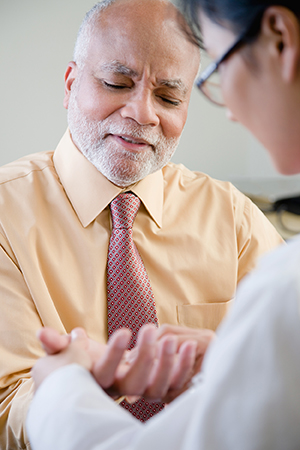Treating Warts
Treating Warts

Types of treatment
-
Do nothing. Most warts will resolve within 2 years, even without treatment. So doing nothing is sometimes a good option. This is particularly true for smaller warts that are not causing symptoms.
-
Cryotherapy (liquid nitrogen). This kills skin cells by freezing them. It kills the warts and destroys skin infected by the wart-causing virus. This is done in your healthcare provider’s office and will cause some discomfort. It may take several treatments over several weeks to get rid of the warts.
-
Topical medicines. Prescribed topical medicines can be put on the skin. These are usually applied in the healthcare provider's office. But some prescriptions may be applied at home.
-
Over-the-counter (OTC) topical treatments. OTC medicines that most often contain salicylic acid may be an option. These patches, liquids, and creams are used at home. The medicine is applied daily to the wart and nearby skin. It's usually left on overnight. The dead skin is filed down the next day. In 1 to 3 days, the procedure can be repeated. Topical treatments are sometimes combined with cryotherapy.
-
Electrodessication and curettage (ED & C). For this procedure, the healthcare provider applies numbing medicine to the wart. Then the wart is scraped or cut off. This type of treatment is usually not the first line of therapy.
-
Laser surgery. This can vaporize wart tissue or destroy the blood vessels that feed the wart. This is done in the healthcare provider's office.
-
Shots (injections). These can be used to treat warts that don’t respond to other treatments, such as stubborn or painful warts around the nails. This is done in the healthcare provider’s office.
When to seek medical treatment
It’s a good idea to have your healthcare provider check your warts. That way your provider can rule out any other skin problems. Sometimes a callous or a corn can look like a wart, but the treatments may differ. Treatment can also provide relief from warts that bleed, burn, hurt, or itch. Genital warts should always be treated. They can spread to other people through sexual contact. And they may cause genital or cervical cancer.
After having your warts treated, new warts may still appear. Don’t be discouraged. Warts often come back. See your healthcare provider again to discuss this. Your provider can tell you about the treatments that most likely will help clear your skin of warts.
Updated:
March 16, 2019
Reviewed By:
Michael Lehrer MD